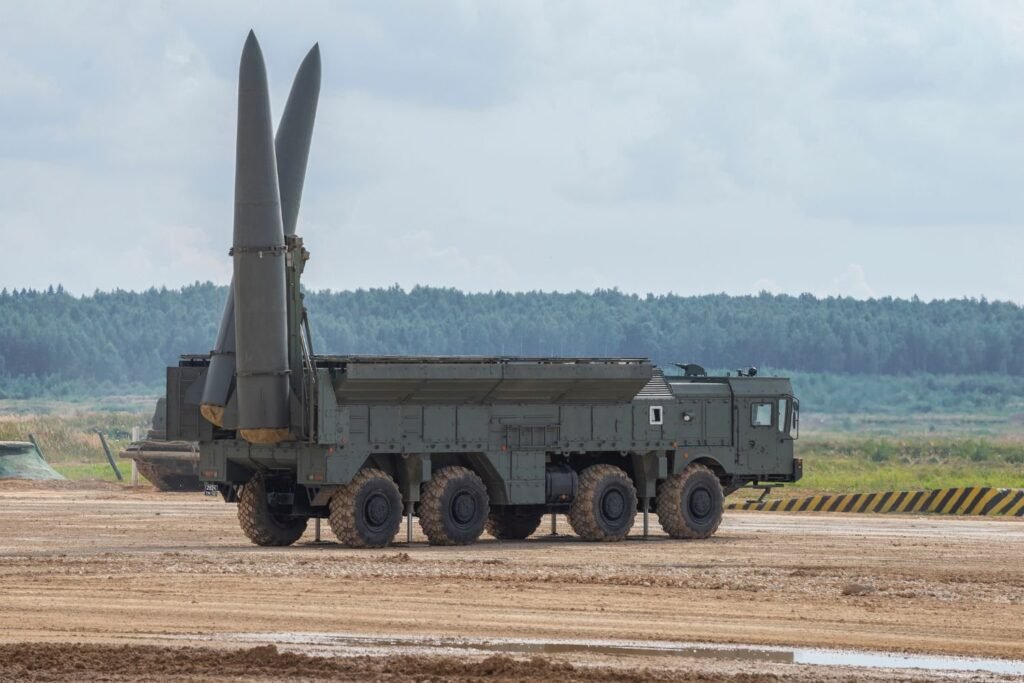Russian Demolition Missile Could Alter Global Nuclear Balance: Global Concern Over This “Explosive Monster”

The recent deployment of a nuclear-tipped missile by the Kremlin has raised concerns among Western defense agencies. This move, which represents an unexpected shift in Russian aerospace tactics, has sparked international reactions to this technological threat that revives tensions from the Cold War.
## A missile with ambitions beyond conventional combat
The R-37M, one of the latest additions, has caught the Pentagon’s attention for its uncommon characteristics. Equipped with a nuclear warhead, this air-to-air missile represents an alarming deviation from its conventional use.
According to information revealed by the media, the R-37M has been designed to reach targets over 300 kilometers away, allowing Russian fighters to attack without the need to get too close to the enemy. Its advanced radar can track and destroy mobile targets, such as combat aircraft and bombers, even in high-mobility environments.
Its solid fuel engine propels it at hypersonic speeds, making it difficult to intercept and increasing its lethality. While it had been used in its conventional version until now, its modification with a nuclear warhead makes it a device capable of neutralizing multiple threats at once, thanks to its expansive range of action.
## Strategic implications and echoes of the Cold War
The use of a nuclear warhead in an air-to-air missile is not entirely new. During the Cold War, both the United States and the Soviet Union developed similar technologies to deter massive bomber attacks. The Soviet R-4 missile, for example, was designed to eliminate B-52 aircraft in a single strike.
However, over time and with the advancement of precision weapons, this type of arsenal became obsolete. The return of the R-37M, now with a nuclear warhead, revives a forgotten strategy and raises questions about the Kremlin’s intentions and the global military scenario that lies ahead.
In addition, the detonation of a nuclear warhead in the air can generate an electromagnetic pulse (EMP), capable of disrupting the enemy’s communications and electronic systems, which could be devastating in highly technologized modern conflicts.
## International comparisons and looming threats
The Russian missile stands out from its counterparts in other powers. The American AMRAAM, while reliable, does not have a comparable range or the ability to carry nuclear warheads. The PL-15, installed on J-20 fighters, offers similar range capabilities, but is still limited to conventional ammunition.
The introduction of the R-37M with nuclear capability reconfigures the possibilities of deterrence in future conflicts. In a confrontation with NATO, Russia could use this missile to attack key command and surveillance platforms, such as AWACS aircraft, severely weakening the response capacity of allied forces.
Since the beginning of the conflict in Ukraine, the conventional version of the missile has already proven effective against Ukrainian aircraft. Now, with the addition of a nuclear payload, its strategic value multiplies, both in current operations and in potential scenarios of confrontation with the West.
The objective: to halt Western air dominance
Russia’s investment in this type of weaponry responds to a clear logic: to counter the aerial superiority of NATO. Western forces rely heavily on interconnectivity and real-time situational awareness. An weapon capable of interfering in these dynamics.
According to data from the Federation of American Scientists, the Russian nuclear arsenal consists of around 4,309 warheads, and there is an active effort to modernize their systems inherited from the Soviet era. The R-37M is part of that transformation.
The U.S. Department of Defense has already begun analyses to counter this new challenge, but the emergence of technology with these capabilities underscores a critical point: aerial warfare could be entering a new, more dangerous and unpredictable era.




